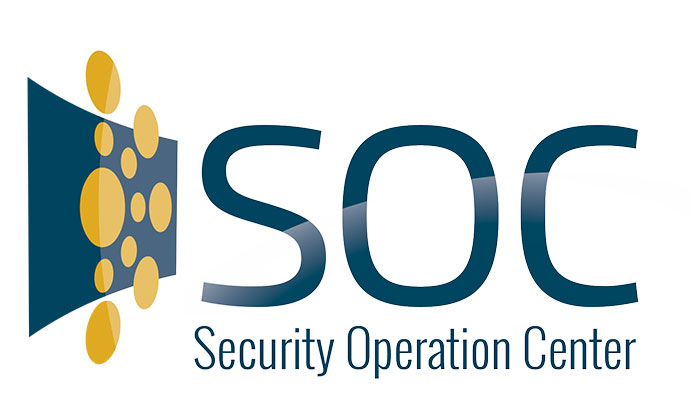SOC implementation stages
A SOC is a team consisting primarily of security analysts organized for the purpose of identifying, analyzing, responding to, reporting, and preventing cyber security incidents. The work of this center is to protect computer networks against unauthorized activities. This may include activities such as monitoring, detection, analysis like analyzing patterns and common patterns of activity by threat actors, and activities related to incident response and systems recovery.
Building a Security Operations Center (SOC)
A security operations center, in addition to security analysts, needs someone to oversee and manage its multiple, complex, and dynamic components. The SOC manager is usually busy solving various challenges, both inside and outside the security operations center. The security operations center manager is responsible for prioritizing tasks and organizing resources, and the ultimate goal in performing these tasks is to detect, investigate, and deal with incidents that may affect the business.
The SOC manager must develop a workflow model and implement Standard Operating Procedures (SOP) for the incident management process; Trends that will guide analysts in triage and incident response processes.
Defining repeatable processes for incident triage and investigation standardizes what a SOC analyst does and ensures that no important tasks are missed.
By creating a repeatable workflow for incident management, the responsibilities and actions of team members are fully defined, from creating an initial alert and assessment at Level 1 to handing over to Level 2 or 3 personnel. In addition, resource allocation will be much more efficient when tasks are performed based on workflow.
One of the most widely used incident response process models is the DOE / CIAC model, which consists of six phases: preparation, identification, containment, destruction, recovery, and learning from incidents.
What are SOC implementation stages
To set up a Security Operations Center, you need to follow the implementation stages. In the following, we will briefly describe these steps.
Step 1
Assess your organization’s current capabilities. Limit the scope of work to critical operations, including Monitoring, Detection, and Response Recovery. Try to perform critical operations of the organization as much as you can without delay. Consider business goals and make policies accordingly.
Step 2
In the second step of implementing a SOC security operations center, you should identify the most important risks that the organization has suffered from in the past. For example, phishing attacks.
Now you have to choose your solution according to these attacks. Of course, don’t forget that your solution today needs to be scalable, and it needs to meet the future needs of your SOC Security Operations Center. By shrinking the scope, you can get your security operations center up and running faster and get you to success faster.
Step 3
Before you start implementing your Security Operations Center, don’t forget the basics. Sometimes we get so involved in the implementation that we forget the basic vital points. Ensure all SOC staff devices are secure before any implementation. Mobile phones, laptops should all be tested and ensure their correct functioning.
Then set up a mechanism so that SOC security operations center unit employees can perform their operations in a completely secure and remote manner. Make sure your authentication system is performing well.
Best practices for setting up a SOC
Creating an effective secure operations center can be difficult. Here are some of the best practices learned from some CIOs who have done it right.
Understanding the Role of the Security Operations Center
This may sound very simple, but trust me. Most of us still make the mistake of not understanding what SOC is supposed to do. A good security operations center monitors all endpoints and networks in your business, identifies potential security vulnerabilities and incidents, and of course, handles them quickly and efficiently. Not to be confused with the IT help desk. As usual, the Help Desk is for employee-related IT issues, while the Security Operations Center is for the entire organization as a department.
Setting up the right infrastructure
An important part of a good security operations center is using the right tools and products. Evaluate and buy the best tools and products based on the look of your organization and infrastructure. Some of the frequently used products are:
- Firewall
- Asset Search System
- Endpoint security system
- Data monitoring tools
- Automatic application security
- Security Information and Event Management (SIEM), etc.
Assemble the right team
A good SOC needs a good team. People with different skills are needed, including specialists to:
- System monitoring and alert management
- Incident manager to analyze each incident and propose actions
- A threat hunter to discover potential incidents internally
All of these skills require a lot of training and experience in things like intrusion detection, reverse engineering, malware anatomy, and so on. Make sure you have a budget to not only hire this team, but also to make sure it stays well trained. Oh, and since we’re talking about hiring a team for a Security Operation Center, don’t forget that you need a dedicated SOC manager. SOCs can be very chaotic at times and require constant communication between numerous teams. Crisis management is a necessary skill for someone to lead this team.
Create an incident response system
An incident response team is extremely important to building a successful security operations center. A good incident response team within the SOC can decide how best to allocate and manage identified incidents and implement a defined action plan.
You can also help set up a repeatable incident-based workflow. They are also a critical part of communication between business, legal, and public relations teams in the event of an incident requiring organization-wide remediation. The incident response team should be as proactive as possible. You should strictly adhere to a predefined set of response rules or help create one based on your experience.
Defend with full power
Finally, one of the primary purposes of a security operations center is to defend the perimeter. There must be teams focused on detection and teams focused on prevention. The SOC team should gather as much information as possible to improve. The more data and context the SOC collects, the more events per second and more flows per interval analysts must manage. While this is true, the obvious observation is to keep false positives to a minimum so that analysts can use their time efficiently.
There a lot of applications can be implemented in SOC which provides full network visibility and agility for the admins. Applications such as Splunk, SolarWinds and ManageEngine are the most well-known brands in the industry.




